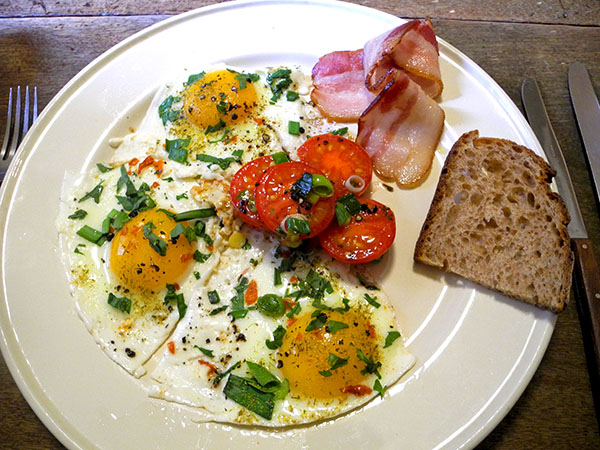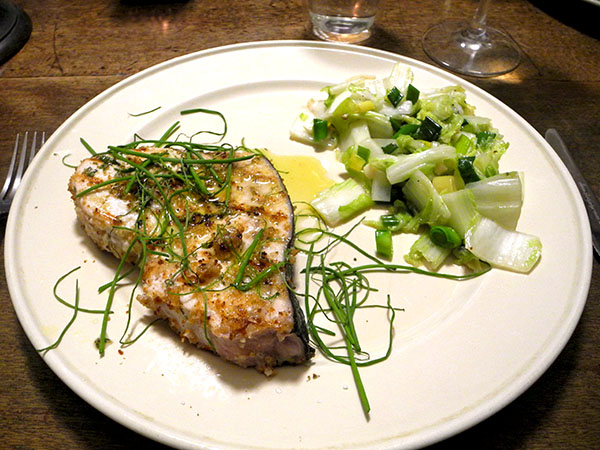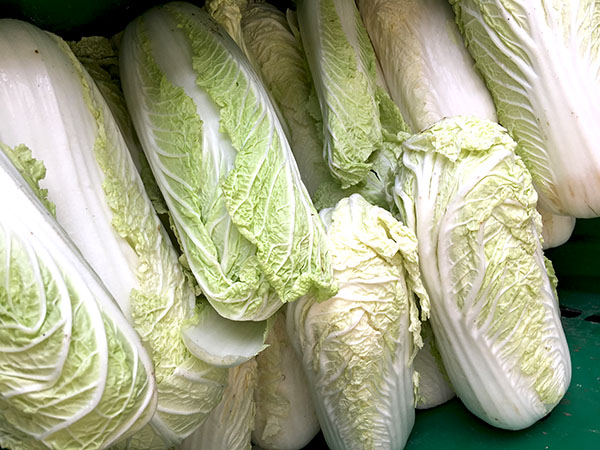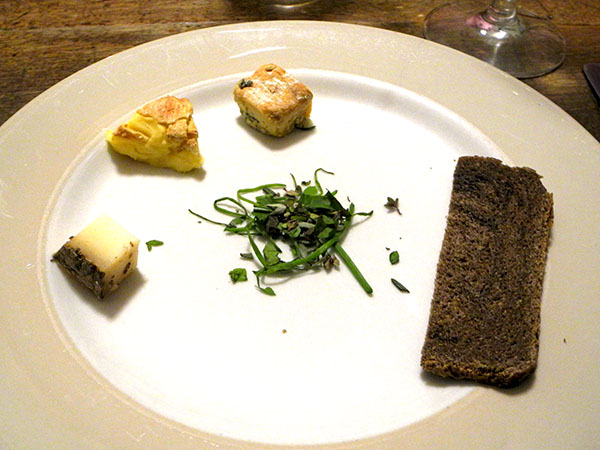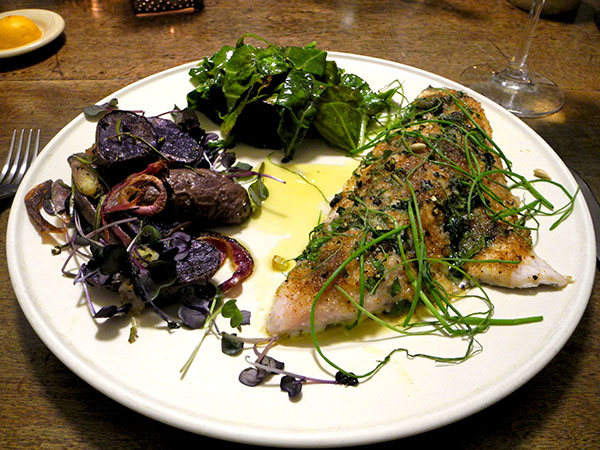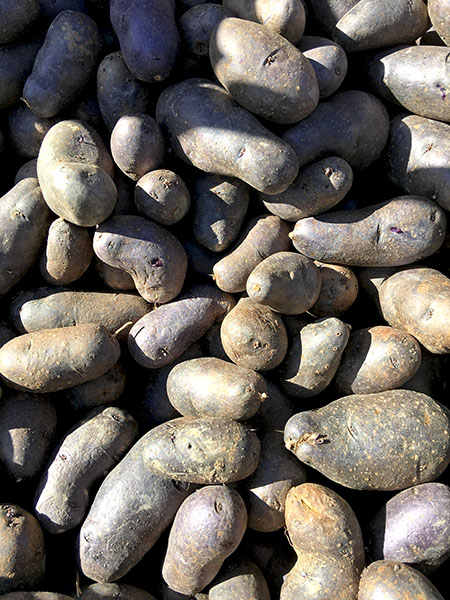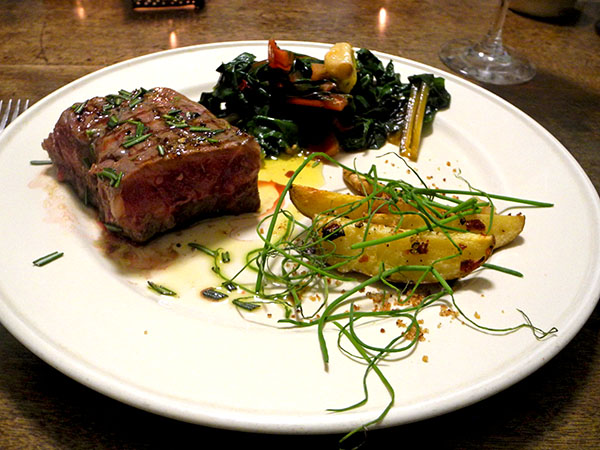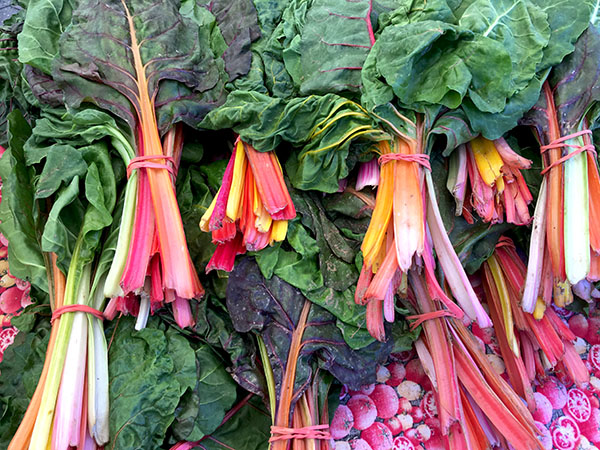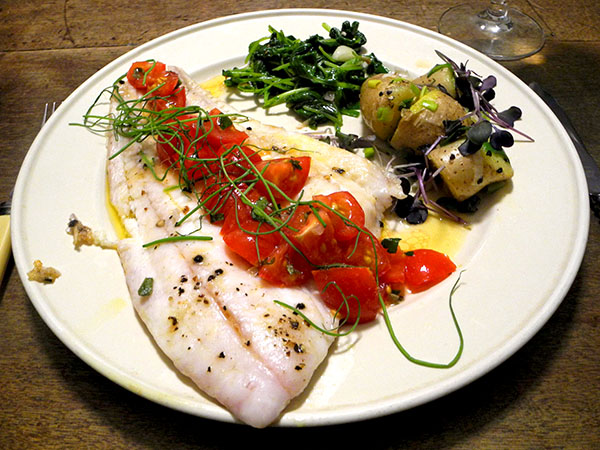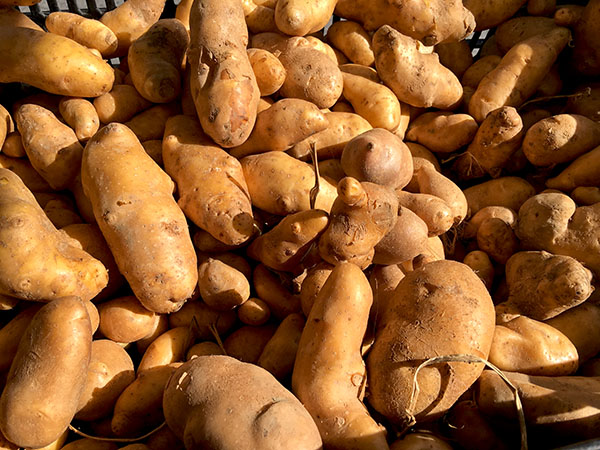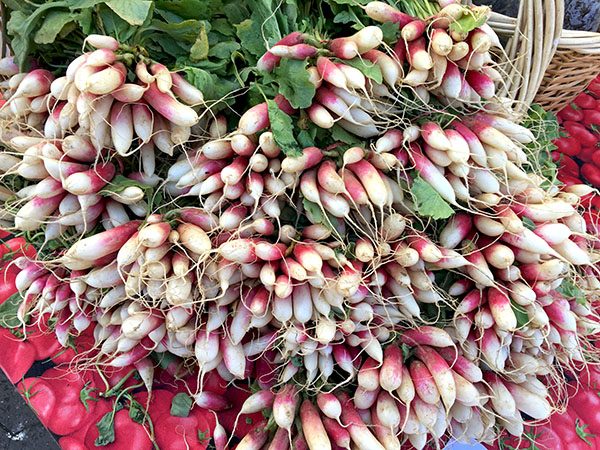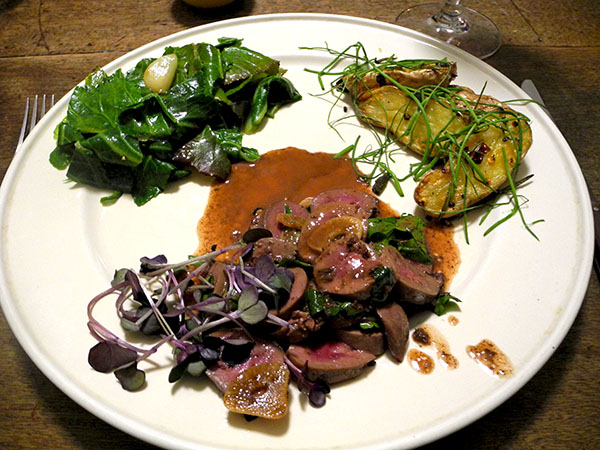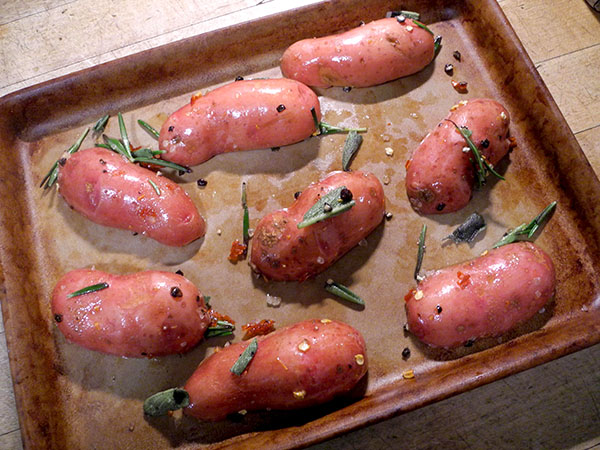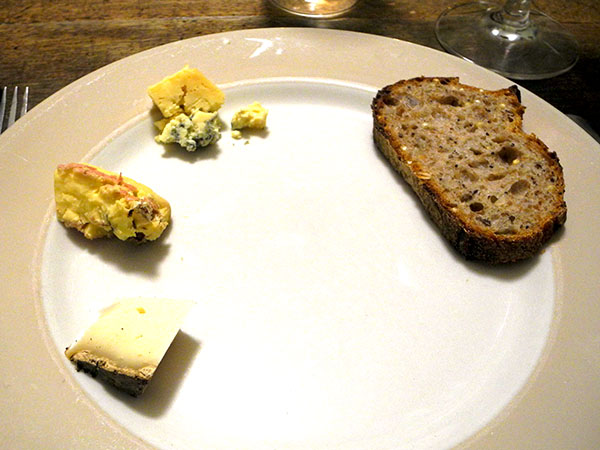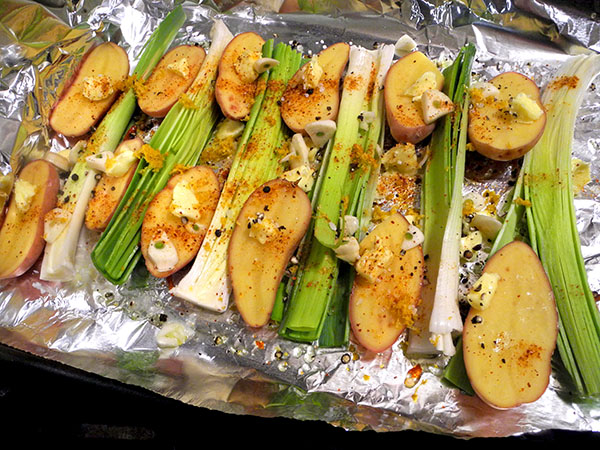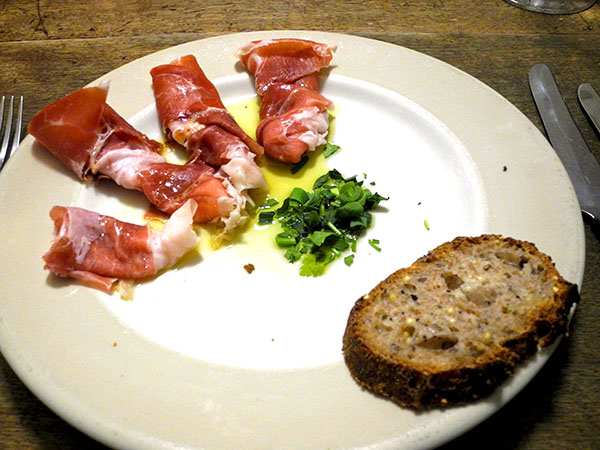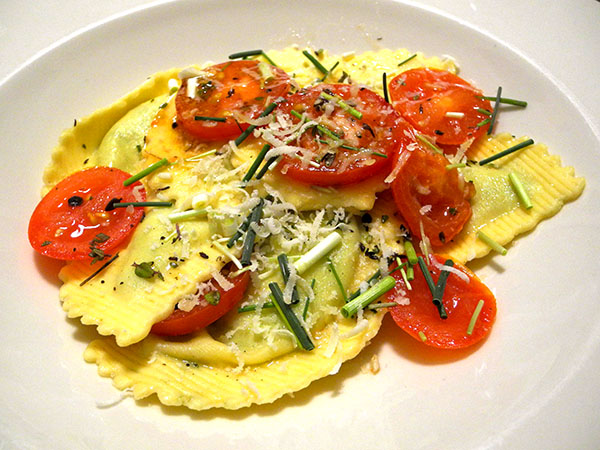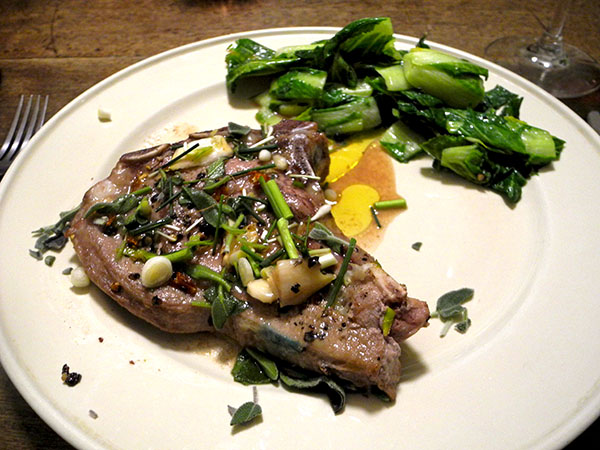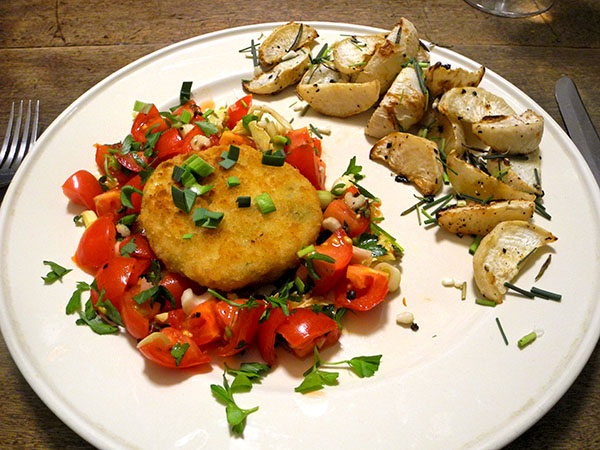
Mostly because we’ve been running around during New York art fair week, I haven’t been to the Greenmarket in 5 days. Also, I haven’t bought any fish in 8, but we’ve still had to eat, and we’ve done pretty well, with the help of a great pizza one night.
I had thought about going to Union Square on Friday, even if the time I’d spend would eat into our window for visiting NADA New York. Then, late the night before, I did some calculations and decided I still had enough good stuff on hand to put together decent meals on the 2 evenings I’d be able to cook at home before Monday, when I would definitely be able to make it to the market.
Last night we enjoyed one of the 2 packages of frozen crab cakes I had been keeping for such an eventuality, and, aside from some beautiful local (Maine) outsize cherry tomatoes with which I could assemble a salsa, I also had a decent selection of root vegetables to choose from.
Fresh herbs are one of the things I miss most during the winter months, but there are a surprising number of opportunities to pick up some of them in the Union Square market. I found these beautiful thyme bunches, leaves with purple-red undersides, and definitely a sturdy feel to them, but no less pungent than their summer cousins.
I’m no botanist, so I can claim no authority on the designation, but I labeled my photograph of the thyme, ‘winter thyme’, because, well, who knew there was such a thing?
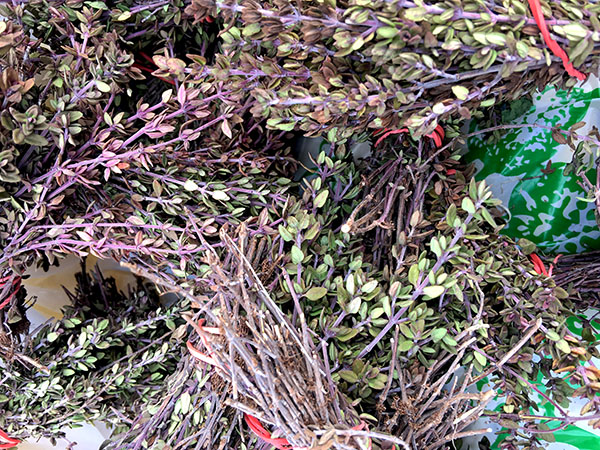
There’s a reason winter vegetables have always been so popular in the winter (well, aside from their virtues otherwise: Most roots (and brassica as well) are pretty sturdy, and they can be stored for longer periods than most people expect. I bought the radishes I roasted yesterday on the first of February, just over a month before.
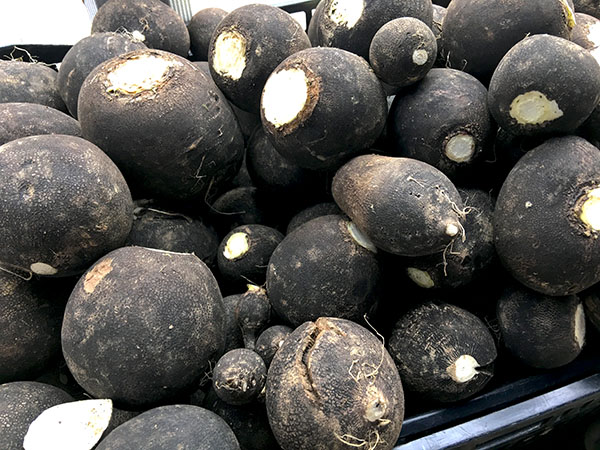
- two crab cakes from PE & DD Seafood (the ingredients are crab, egg, flour, red & green peppers, garlic, salt, pepper, breadcrumbs, mayonnaise, milk, celery, and parsley), heated inside a oval heavy enameled cast iron pan, 3 to 4 minutes to each side, served inside a ring of salsa which was composed of 7 chopped Backyard Farms Maine ‘cocktail tomatoes’ from Whole Foods, combined with salt, freshly-ground Tellicherry pepper, a bit of a powdered seasoning blend with the proprietary name, L’eKama, a small amount of chopped celery heart from Foragers Market, chopped red thyme from Phillip’s Farm, chopped parsley from Eataly, one chopped scallion from Norwich Meadows Farm, the crab cakes then finished with a sprinkling of the green stems of the scallion, chopped, with more chopped parsley sprinkled on the salsa
- black radishes from Norwich Meadow Farm, scrubbed, peeled, cut into wedges, tossed with a little olive oil, salt, freshly-ground Tellicherry pepper, rosemary leaves from Whole Foods Market, separated from their stems, and one crushed piece of dark home-dried Habanada pepper, roasted inside a large Pampered Chef unglazed ceramic pan, at 400º for 20 or 25 minutes
- the wine was a California (grapes from the Sacramento River Delta with a small amount of Viognier from Lodi) white, Miriam Alexander Chenin Blanc 2014
- music was selections from The Once Festival 1961-66, which included work by Robert Ashley, Roger Reynolds, and others
